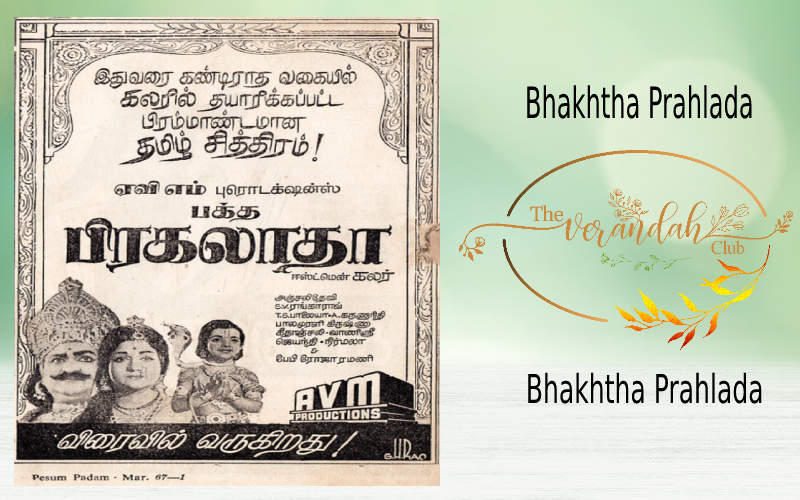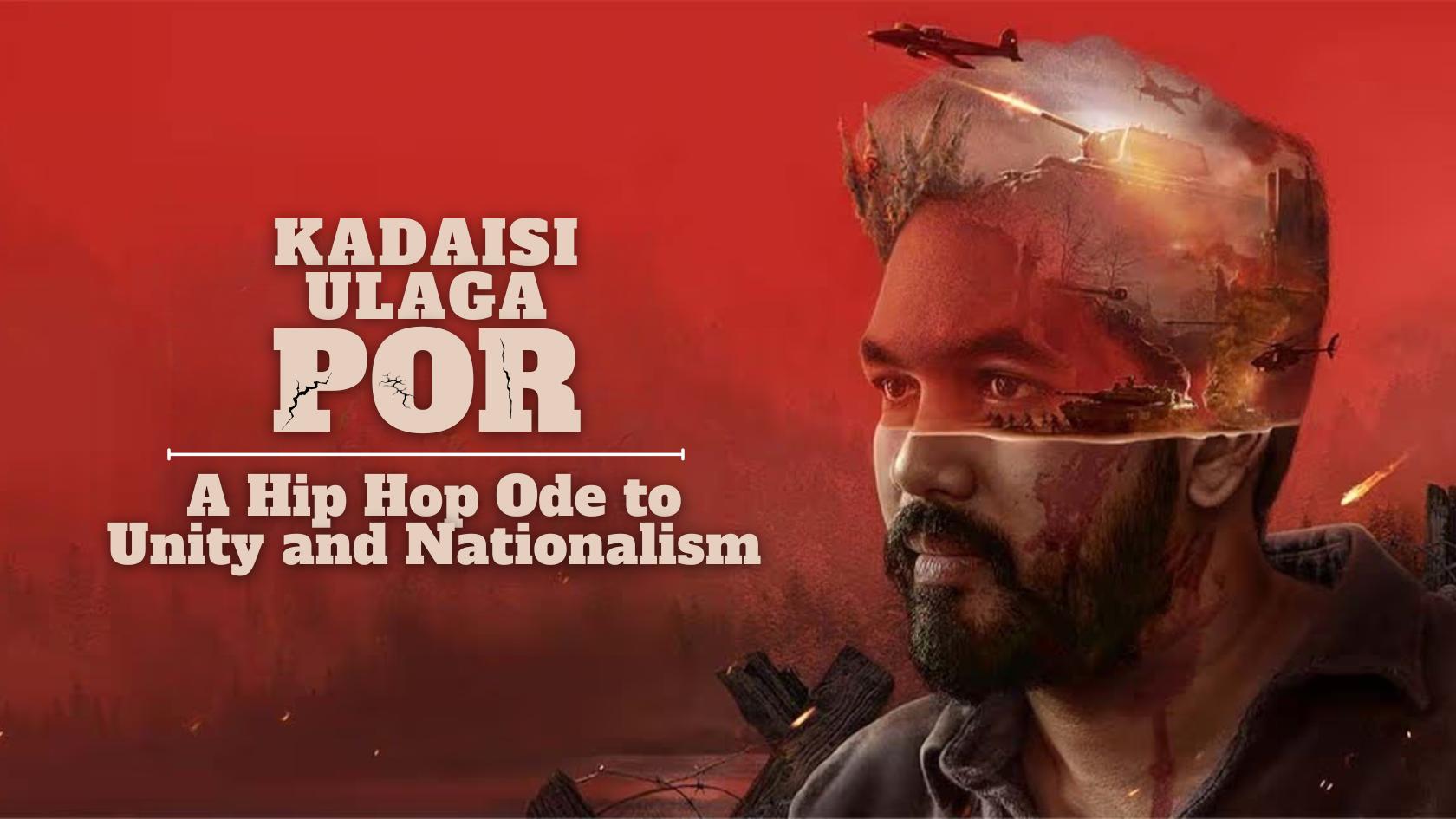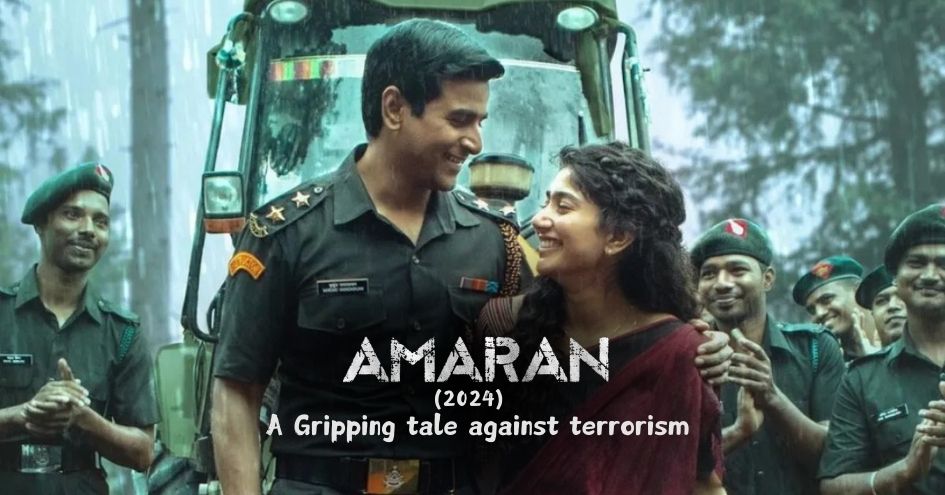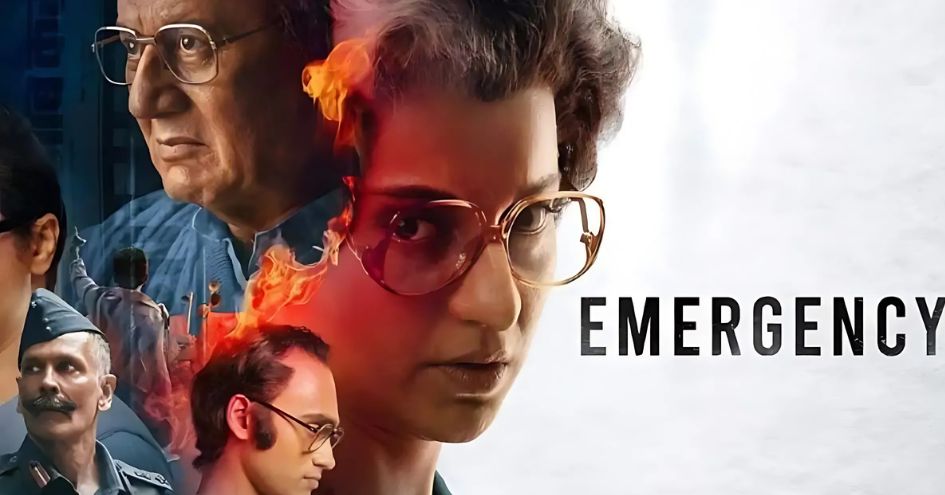
Good old days, we call it right, films were based on myths. A myth was a powerful tool employed by our ancestors to deliver the subtle truth to the common minds. Children and many elders usually preferred stories and narratives to philosophies. The reason could be that myths enveloped the truth in a fun-filled, interesting packages and delivered it through stories. Not only the mythological stories held many moral values, but also the characters which played in it.
So, questioning a myth without understanding the philosophy inherent it, just means that our minds are still developing.
'Bhakta Prahlada', a film of 1967, conveys the truth in a lucid and interesting way. The plot outline is that the four Sanat Kumaras, Sanaka, Sanatana, Sanananda, and Sanatkumara, go to Vaikunta to visit Mahavishnu. But the Dwarapaalakas (gatekeepers) of Vaikunta, Jaya and Vijaya, stop them from entering saying the reason that the Lord and the mother are involved in some important work. But the Sanat Kumaras tell that they have traveled and come to Vaikunta only to visit Mahavishnu. The conversation soon turns into an outrage and the saints curse the Dwarapaalakas to be born in the earth as Kama, Kroda, Loba, Moha, Mada, and Maatsarya.
Soon, the saints get the Darshan of the Lord. Jaya and Vijaya tell the Lord about the curse of the sages. But the Lord says he cannot totally negate the curse but can offer two solutions, either to be His devotees and live an earthly life for seven human lives or be His enemies for three human lives. Jaya and Vijaya respond that they are not ready for the long separation of seven human lives, instead choose the shorter one. But as they choose the shorter demonic period from the offer of the God, He says that they would be born as Hiranyakashipu and Hiranyaaksha to Sage Kashyapa and Diti in their first life, as Ravana and Kumbhakarna in second, and Sishupala and Danthavakra in their third human life, failing to pronounce the name of Hari even at the least.
The film covers the story of only one human life of Jaya and Vijaya as Hiranyakashipu and Hiranyaksha. Both the asura brothers cause great destruction to all saints and sages in the earth. Finally, Hiranyaksha, grown in strength, tries to attack Bhooma Devi (Mother Earth) herself. Bhooma Devi reaches Vaikunta and pleads Mahavishnu for help. Mahavishnu immediately takes the form of Varaha (a semi-human in the form of a boar) and kills Hiranyaaksha. Infuriated at Lord Vishnu for killing his brother, Hiranyakashipu decides to meditate on Lord Brahma to get the boon of deathlessness.
Pleased by Hiranyakashipu’s contemplation, Lord Brahma appears and asks for his wish. Hiranyakashipu asks for deathlessness. Although Lord Brahma doesn’t offer him the same, he asks for a modified version of the same boon which he thinks to be deathlessness. He does not realize whatever words can define cannot go beyond death. Lord Brahma offers him the boon that he asked for. In the meantime, Hiranyakashipu’s wife, Leelavati (Kayadhu) who is pregnant is taken away by disguised Indra to kill the child in her womb, who will eventually become the great asura’s progeny. Narada stops Indra and cautions him that horrendous things would happen if Hiranyakashipu comes to know about the mishap. So, Narada asks Indra to leave Leelavati at his care in his Aashram.
One day, Narada begins to teach the greatness of Lord Mahavishnu, who is the personification of absolute truth. Leelavati hearing the teachings of Narada, falls asleep unconsciously and the child begins to hear the absolute truth revealed by him. In a few days, Leelavati gives birth to a handsome baby boy who is born with the Amsa-s of Mahavishnu. At the same time, Hiranyakashipu comes to Narada’s Aashram in search of his wife. He gets glad on hearing about the birth of his child. He requests the sage to adopt a name for the child, Narada comes out with Prahlada. Later, he takes his child and his wife to his palace.
He then goes to Vaikunta with his army and finds Lord Vishnu missing. Precedingly attacks the Indralokha and handcuffs all the Devas to his court. Before that, he appoints Narada as his advisor in the court for supporting and protecting the child prince and his wife in his Aashram during his absence.
In the due course, all the idols in the temples are replaced with that Hiranyakashipu’s and innocent people are made to worship his idol. Instead of the holy chant of Lord Narayana, everywhere it is replaced with that of Hiranyakashipu. His atrocities continue to increase, it goes up to the extent of announcing himself to be the Chakravarthy of the three worlds. During his oppressive rule, his son learns Vidya formally from proficient Guru-s who teach them all Vedas and Shastras in their Aashram. One day, Leelavati falls mentally sick of not able to glance Prahlada even once. So, Hiranyakashipu orders his minister to bring Prahlada to his court for a shorter period.
When Hiranyakashipu asks his dear son, Prahlada to recite any one of the poems that he had learnt during his Gurukulavasa, the entire court is taken aback on his recitation of a poem praising the glories of Mahavishnu. He grows furious on hearing his son praising his enemy, Lord Vishnu and orders his Guru-s to teach him proper education on his glories. The Guru-s try to make him pronounce the holy chant of his father, but he instead hears the chant of the Lord. The Guru-s try many ways instead Prahlada teaches the importance of praying to Lord Vishnu to his other inmates. Failing in their attempts, finally the Guru-s present themselves in the court announcing their incapability to teach and change Prahalda’s mind.
Hiranyakashipu orders his minister to punish him in indifferently using various degrees of punishments. First, Prahlada is shut in a darkroom where he continues to chant the name of Mahavishnu and is saved by the Lord. Next, he is taken to the prison where different saints are invariably tortured by beating them with various iron weapons. When the soldiers try to hit the boy, the weapons turn against and chase them towards exit by the grace of the Lord. Then he is ordered to put to death by making the elephants stamp him, but his divine song of Hari turns elephant to praise him. Following it they try to put him to death by making him stand amidst the nest of poisonous snakes, but he is saved by Hari bhakti. Then is given a glass of poison by Hiranyakashipu himself but is rescued. He finally orders his son to be thrown ask in sea, but there too Prahlada is saved by the angels of sea.
Hiranyakashipu has his final conversation with his son not realizing that it is his final. During which he asks his son that if Hari is everywhere, then where exactly Hari is. For which he says, “My lord is in pillars as well as posts.” Boiling with anger, Hiranyakashipu asks that if his lord is present in the pillar pointing one, Prahlada obviously gives him a nod. So Hiranyakashipu tries to break the pillar with his weapon, and there jumps out Narayana in the form of Lord Narasimha and kills him tearing his intestine by sitting on his palace steps. Maddened and violent Narasimha is brought back to through a concluding song of Prahlada.
A must watch film to understand the importance and significance of chanting Lord’s name, be it Shiva, Vishnu, or any of His other forms. The essence is that Ishvara is one, but his forms are many. The only Raksha (protection) during this Kali Yuga (one of the time periods according to the Vedic calendar) is the Lord’s name. This philosophy is beautifully and emotionally brought by the child Prahlada character.
This mythological film was produced by A. V. Meiyappa Chettiar’s A. V. M. production company and co-produced by his sons. It was starred by S. V. Ranga Rao and Anjali Devi. The title character was played by Roja Ramani which was her debut film. It was written by D. V. Narasa Raju and directed by Chitrapu Narayana Rao. The film was based on the legendary character of Prahlada, taken from ‘Bhagavata Purana’. ‘Bhakta Prahlada’ was released on 12 January 1967 and was a commercial success. It completed a hundred-day run in theatres. It received the ‘Kamsya Nandi’ Award for the best feature film. The film was then dubbed to Tamil and other Indian languages.
The movie was taking too much time, and this perturbed A. V. Meiyappa Chettiar. Therefore he requested the veteran actor, S. V. Ranga Rao who starred as Hiranyakashipu to get it done faster. The smart actor requested a boy to bring a large tray. S. V. Ranga Rao placed his crown ornaments and the mace used in the shoot on the tray and gave it to Meiyappa Chettiar. The sheer weight of these items was felt by Chettiar. Immediately Ranga Rao told Chettiar that he had to lift the mace every time on the clap for each take. The weight of the accessories had caused delays and therefore several takes.
Some years, later the famous actor M. R. Radha had performed the role of Ranga Rao (Hiranyakashipu) in the movie ‘Dasaavatharam’. L. Vijayalakshmi who rendered the song ‘Rajan Maharajane’ in the movie. She was a trained Indian Classical dancer. Later went on to become an auditor. She had got married to the agricultural scientist, Surajit Kumar de Dutta. Post her marriage she moved to Manila in Philippines. L. Vijayalakshmi had the privilege of performing in front of Prime Minister, Morarji Desai, a Sthitaprajnya, during his visit to the Philippines.
NEXT ARTICLE

Hiphop Tamizha's "Kadaisi Ulaga Por" (The Last World War), released in 2024, transcends the typical action-packed sci-fi war movie genre. It embeds a...

Creating war films is a challenging endeavor, and capturing the emotional struggles of soldiers and their families adds an even greater layer of com...

Emergency, directed by Kangana Ranaut, is a bold and gripping political drama that delves into one of Independent India’s darkest periods: the Emergen...